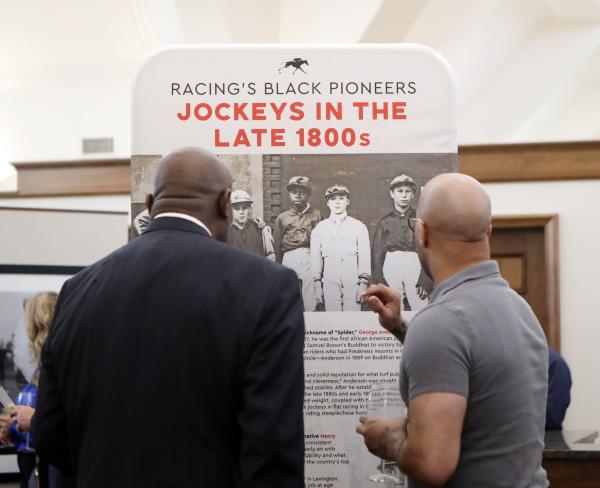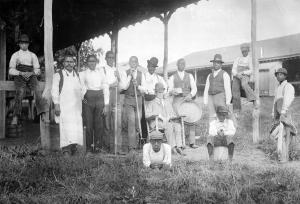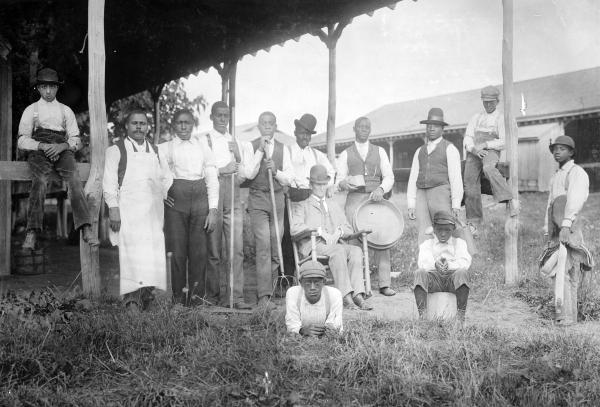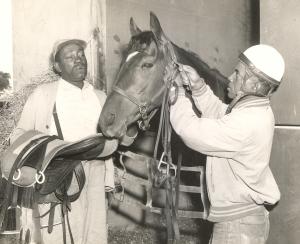

Website Search

Read USA Today in its original printed format, including pictures. Includes issues from January 3, 2006 to present.
Discover early 19th-century Lexington in this four-panel traveling exhibit created by the Mary Todd Lincoln House. Images and text illustrate city life, the economy, schools and churches, and arts and leisure during the years Mary Todd lived in Lexington (1818-1839). Text is written for ages 12-up. Free.
The Heart of the Turf: Racing’s Black Pioneers traveling exhibit developed and shared by Keeneland Library, highlights the lives and careers of 100 African American horsemen and -women from the mid-1800s to the present. One-of-a-kind photographs from Keeneland Library collections capture moments across their varied careers, while biographical vignettes honor their lasting legacies.
From racetrack superstars to behind-the-scenes caretakers, The Heart of the Turf: Racing’s Black Pioneers showcases select stories of the countless African Americans who forged their way in Lexington and beyond from the era of slavery to the present, making the racing industry what it is today.
Lisa Smith is the Public Affairs Manager for Columbia Gas of Kentucky where she has held a variety of roles since joining the company in 1996. Lisa earned a bachelor’s degree in journalism and advertising from the University of Kentucky. A proud Lexington native, she has dedicated her time to volunteering and has served on the Boards of numerous organizations throughout her career.
Description coming soon.
Presented by Arts Connect
Compiled by Cyrus Parker Jones, a man formerly enslaved by the Parker family, these funeral notices cover 667 funerals of individuals in Lexington, including seven free blacks. The funeral notices cover the years 1806-1886. Jones donated his collection to a trustee of the Lexington Public Library prior to his death in 1887, who then added some notices and donated the collection to the Lexington Public Library in 1900.
The Daily Lexington Atlas ran from late 1847 through early 1849 and was Lexington’s first daily paper, and the first to publish information from the telegraph lines. It is described by William Perrin in his 1882 History of Fayette County Kentucky as a “red-hot Whig and fiery southern” publication. It contains some articles and editorials that are overtly racist, as the editors favored slavery, then emancipation only if the freed African Americans were immediately sent to Liberia. It covers the 1848 presidential election and the local election for Kentucky Governor. Perrin claims the paper had an extensive subscriber list, but had to “give up the ghost after several months disastrous experience” due to the expense of the paper.
The Elmer L. Foote Collection is a group of 190 lantern slides. They were created by Elmer L. Foote, a Cincinnati photographer and library staff member whose pictures appeared in the Cincinnati Commercial Tribune.
Letters to and from Father William T. Punch (1874-1933). Father Punch was instrumental in building the 3rd St. Peter Catholic Church on Barr Street in Lexington, KY.
The 1906-07 Lexington cross directory contains residential and business information for the city, arranged both alphabetically and by street, with a business listing by category. It also contains city officials and departments, and basic historical and landmark information. The advertising section is printed on yellow paper.
The city report covers the outline of a citizen participation work plan and its connection with neighborhood groups, as well as the results of those meetings and community concerns that took place throughout 1969. It contains neighborhood maps, images of news articles, and and project methodology.
This half of the record book contains burial records for St. Paul Catholic Church parishioners.
This letter collection was collected by Judge Kenneth Lyons. The earliest date of the letters is 1862, from Bourbon and Nicholas Counties, Kentucky. Some letters are fragments.
The diary (ca. 1899) of Katherine Pettit, details her settlement work for the Kentucky Confederation of Women's Clubs, made yearly trips to Hazard during this period and was a central figure in establishing the Hindman (Kentucky) Settlement School in 1902. Activities described here include teaching, reading, cooking, and hygiene. The diary also includes daily entries (August 3-September 13) detailing Pettit's travel from Lexington and Hazard with fellow settlement workers, her encounters with Hazard and mountain families, and the general scope of her work. Also includes a manuscript map of her camp.
The Kentucky Gazette was the first paper established west of the Allegheny Mountains. The frontier paper focused on East Coast and International news, though some local announcements can be found. Later, the paper focused on disseminating opinions on politics and issues of concern on the frontier. When political parties emerged, the paper developed a Democratic (conservative at the time) bent.
The Lexington Weekly Press was published every Wednesday in Lexington, Kentucky, and contained local, state, and foreign news. The paper focused on Central Kentucky’s “agriculture, manufactures and fine stock”, as well as literary and scientific news, market reports, and serial stories. Local weddings, deaths, community events, and elections for Lexington and the surrounding region. The paper was sent anywhere in the United States at a cost of one dollar per year.
Various Letters to and from Margaret Donaldson found in our Duncan-Goff scrapbook collection.
Scans of the Black Marriage records from the Courthouse in Greenville, Kentucky.
The Reporter was a weekly Republican paper, occasionally semi-weekly when Congress was in session. Continued publication throughout the War of 1812.






















